Analysis: Does Pirate’s Lair on Tom Sawyer Island make sense?
Pirate’s Lair on Tom Sawyer Island combines two unlikely tales: “The Adventures of Tom Sawyer” and “Pirates of the Caribbean.”
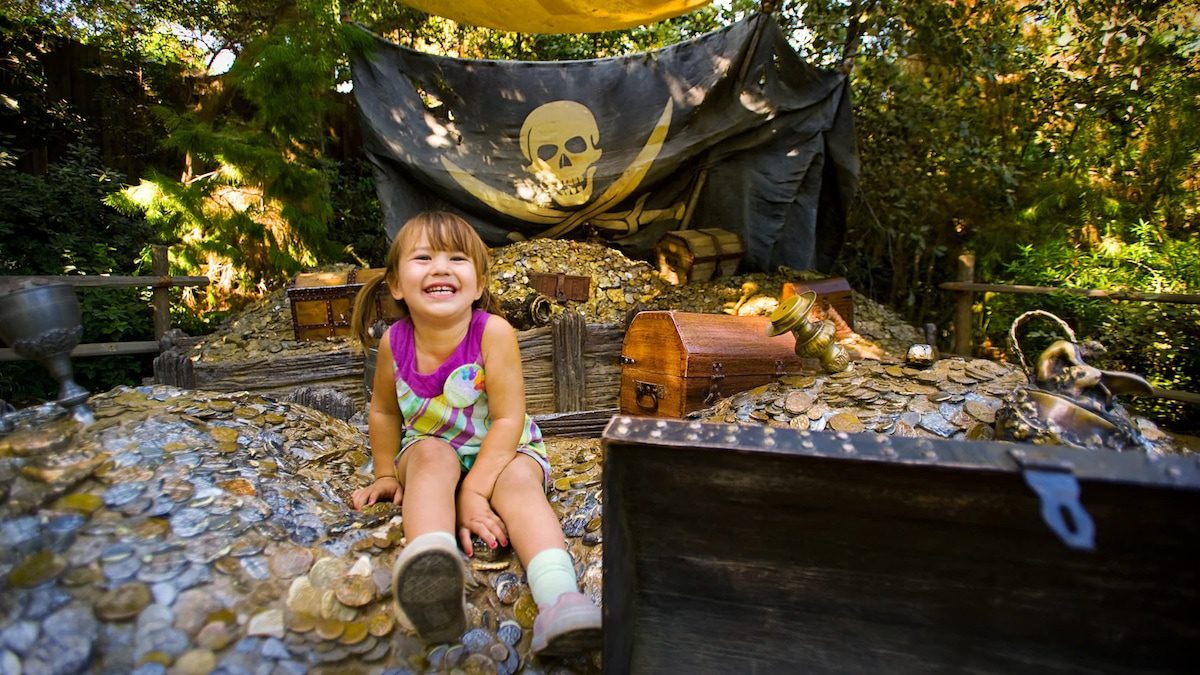
Pirate’s Lair Prelude
I boarded a raft to Tom Sawyer Island at Disneyland Park on a sunny, blue-sky California day in 2018. Just before the driver cast off for our brief trip across the Rivers of America, we were joined by none other than Captain Jack Sparrow. This was not a guest in cosplay (not that that’s allowed, anyway), but rather the official, “real” Captain Jack himself.
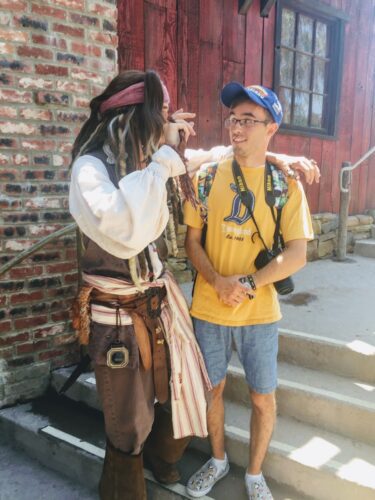
Photo by Blake Taylor
Pouncing aboard, he had an announcement to make.
“Everyone, stay calm! I am taking over the ship!” Jack proclaimed, echoing a line from “Pirates of the Caribbean: The Curse of the Black Pearl.”
He then examined his surroundings; namely, the dingy vessel he had just hopped upon. He corrected himself.
“Boat.”
He looked around again, and settled for a new descriptor.
“Raft. I am taking over the raft!”
Thus encompasses the non sequitur joy of Tom Sawyer Island’s current state — an attraction whose story may not make much sense, but which nonetheless lends itself to one of the most whimsical experiences in Disneyland.
1956: Tom Sawyer Island Opens
Rivers of America has surrounded an island since Disneyland’s opening in 1955, but it wasn’t until 1956 that the property welcomed guests as Tom Sawyer Island.
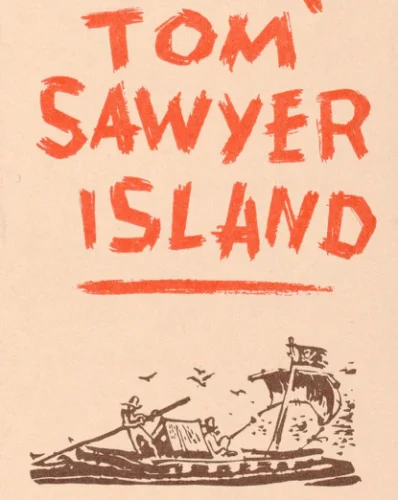
“The Adventures of Tom Sawyer” by Mark Twain hadn’t been adapted into a Disney movie at that point. All the same, its setting of a (problematically) romanticized rural America fit into the story of Frontierland.
“Old West fever peaked during the construction of Disneyland — no doubt shaping some of Walt’s plans,” wrote Chris Nichols in the 2018 book “Walt Disney’s Disneyland.”
The face of Frontierland upon its 1955 opening was that of Davy Crockett — or, at least, Disney’s version of the historical figure, portrayed by Disney Legend Fess Parker in episodes of the “Disneyland” television series.
Parker appeared in person at Disneyland’s grand opening, and footage from that day shows fans as excited to see Davy as guests today might react when seeing Elsa or Mirabel in the parks. Following opening day, fans could get their Crockett fix by visiting the park’s Davy Crockett Museum, in addition to basking in the overall atmosphere of Frontierland that generally matched that of Davy’s television realm.

Even from the earliest beginnings of Disney theme parks, the company created attractions in response to the public’s interest in intellectual property (IP). Around the time Disneyland opened, Davy Crockett’s popularity was so huge that Americans had purchased $300 million worth of coonskin caps ($3.4 billion when adjusted for 2024 inflation). Therefore, investing in an additional attraction for Frontierland made sense, even if the premise didn’t involve Davy himself.

Tom Sawyer Island — with its wooded pathways, winding caves, and semi-hidden play structures meant to be discovered rather than planned for — embodied the youthful spirit of its titular character and provided wish fulfillment for guests yearning to live out their Frontierland fantasy (and again, “fantasy” is a key word here).
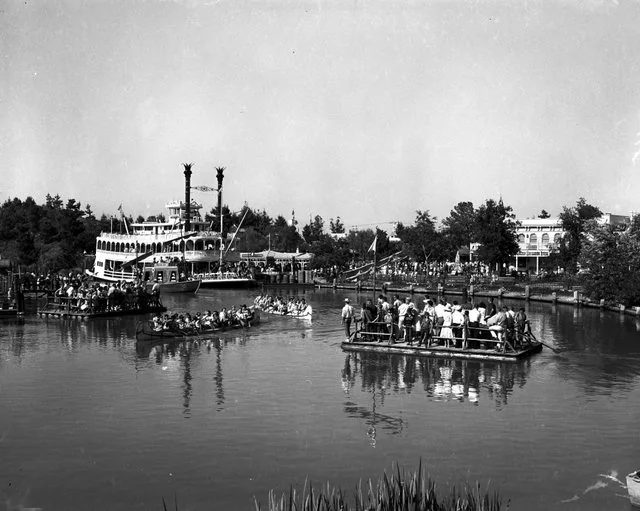
Alluding to where the island was meant to take place, its June 1956 opening ceremony featured the planting of Missouri topsoil with Mississippi River water, according to Leonard Shannon in the 1995 book “Disneyland: Dreams, Traditions, and Transitions.” Furthermore, upon the attraction’s opening, the governor of Missouri formally annexed the island’s California property into the state of Missouri.
2007: Pirates Take Over
By the mid-2000s, Disney had another phenomenon on its hands: the “Pirates of the Caribbean” film series, inspired by the Disneyland attraction.

At the time, Nina Jacobson was the president of Buena Vista Motion Pictures Group (today Walt Disney Studios Motion Pictures). Author Jason Surrell quoted Jacobson in his 2005 book “Pirates of the Caribbean: From the Magic Kingdom to the Movies.”
“Up until now, we haven’t gotten to sit at the table with a live-action franchise like a ‘Harry Potter,’ a ‘Lord of the Rings,’ or a ‘Spider-Man,'” Jacobson said. “To think that we’d finally get there with one of our own rides is incredibly thrilling.”
Even though Imagineers added characters from the films into the original ride in 2006, Disney management wanted more “Pirates” in the parks. Disney executives, not Imagineers, conceived the idea of refreshing Tom Sawyer Island with a “Pirates” theme, as reported by the Los Angeles Times in 2007.
Author and Imagineer Alex Wright corroborated this in the 2008 book “The Imagineering Field Guide to Disneyland.” Upon receiving the mandate for adding “Pirates” to Tom Sawyer Island, Wright wrote, Imagineers “feared that they would not be able to do so without contradicting the existing story lines.”
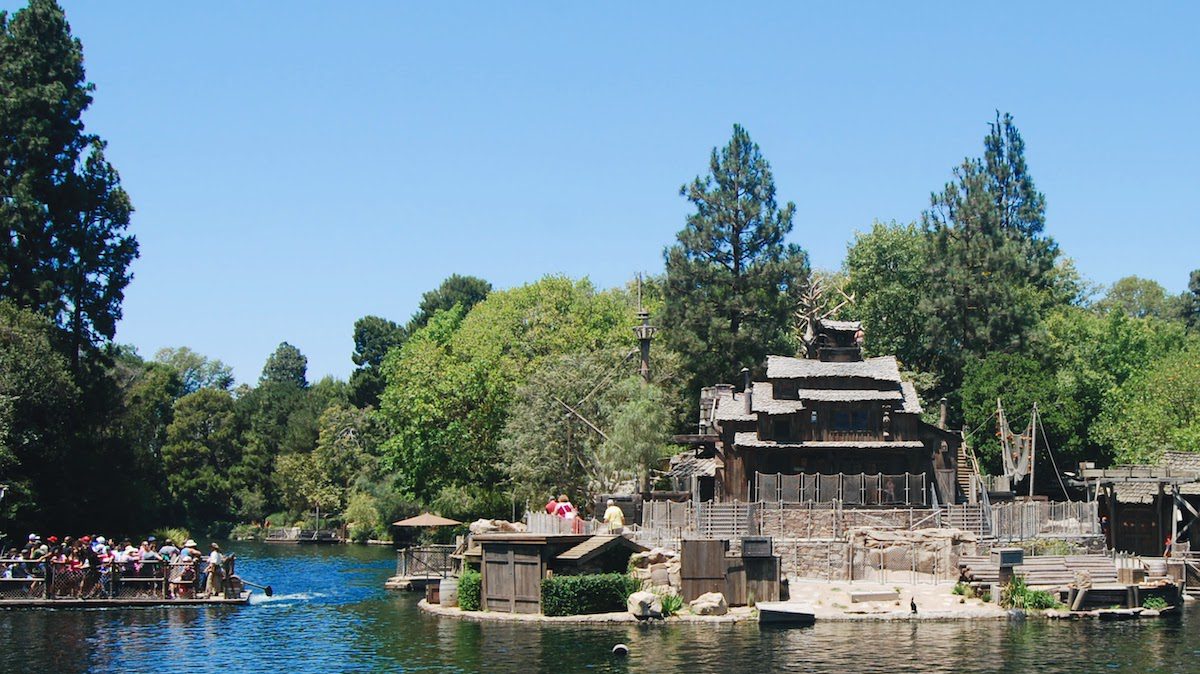
Teams found consolation in reviewing Twain’s book (in which Tom and Huck seek pirate adventures) and early concept artwork from Imagineers of generations prior (which depicted unrealized pirate elements on Tom Sawyer Island at its inception), according to Wright.
And so it was that Tom Sawyer Island became formally known as Pirate’s Lair on Tom Sawyer Island in May 2007. The overhaul coincided with the release of “Pirates of the Caribbean: At World’s End,” the third installment of the film series.


The Questions
Upon first glance at the updated island, the disparate themes of “The Adventures of Tom Sawyer Island” and “Pirates of the Caribbean” are at odds with each other. As the attraction’s full name indicates (being Pirate’s Lair on Tom Sawyer Island), the Tom Sawyer of it all is not completely replaced by a different story. Rather, Imagineers added a new thematic layer on top of the existing story framework.

Guests see Tom and Huck’s names carved into trees … and come face to face with the Dead Man’s Chest, pumping with the heart of Davy Jones inside of it.
Traces of Twain’s original narrative abound … as does Will Turner’s blacksmith shop, inexplicably operating on the island.


As a guest, what story are we being asked to buy into? Are we still in Missouri? Are we in the Caribbean? What connective tissue aligns these story worlds together?
The Answer
Disneyland’s official website offers this explanation as the description for Pirate’s Lair on Tom Sawyer Island: “Travel by log raft across the Rivers of America and retrace the steps of Tom Sawyer and Huck Finn when they ran away to live carefree lives as pirates.”
On this island, somewhere within reasonable traveling distance between both Missouri and the Caribbean, the events of the “Pirates of the Caribbean” films are seemingly canon and preexisting to the story world of “The Adventures of Tom Sawyer.”

In this narrative, it seems, the pirates were here first, not Tom Sawyer. The attraction’s name and signage, though, with its “Pirate’s Lair” verbiage literally tacked on top of the words “Tom Sawyer Island” (not to mention the attraction’s real-life history), implies the opposite.
The Follow-Up
As with any deep dive into attraction lore, a few follow-up questions come to mind.
Is the story’s information clearly presented to the guest? If the story requires prior knowledge, can a guest with no context still enjoy the experience at face value?
Phrased differently, is the storytelling core of a theme park attraction essential to its existence, or does it not matter at all? Should the story serve the experience, or the other way around?

These answers are subjective, and are part of why themed entertainment discourse can be so multifaceted. As always, our motto at the end of the day, no matter what your answer to any of those questions, is to have fun!
Discover more lore behind theme park attractions in our previous story:

